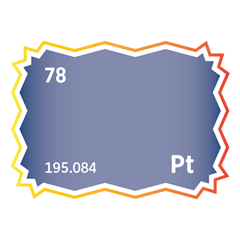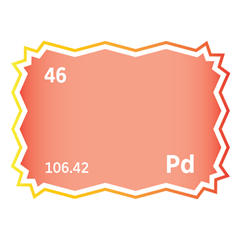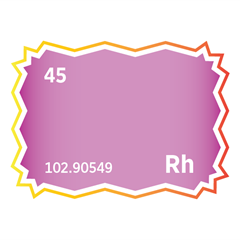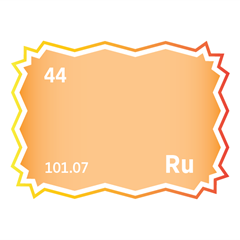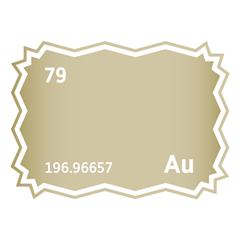Where next for palladium?
The Palladium Standard
14 September 2021
Foreword
“We are on the point of moving up again, and the adventure appears more desperate than ever.”
George Mallory, dispatch from 28,000 ft up Everest on 28 May 1924, one week before a fatal attempt on the summit.
Where next for palladium?
Peaks come in many a range, and with a multitude of ways to reach the top and to navigate safely down. In this issue of The Palladium Standard, we look at ‘Peak Palladium’: the dangers of high altitude and the safe ways onward. Our guidebook is illustrated with historical PGM price charts not unlike the profiles of some of the world’s great mountain ranges. Think of supply and demand trends as the geology determining the shape of the next mountain, valley or plateau.
Welcome then to the Stillwater Complex, deep in Big Sky Country in the US, with our guides, Ryan McKinley and Kevin Butak of Sibanye-Stillwater’s US PGM operations. Geology has been more than generous here, above forming the stunning Absaroka-Beartooth Mountains, below crafting the highest-grade platinum and palladium ore body in the world. The J-M Reef (Johns-Manville) in the Stillwater Complex boasts almost three-quarters of an ounce of Pt+Pd per tonne.
The Stillwater Complex is distinguished from other well-known PGM deposits, such as those in the Bushveld Igneous Complex and Norilsk, not only by its very high grade, but also by its high palladium-to-platinum ratio, 3.5 oz of palladium for every 1 oz of platinum. It is concentrated in a narrow mineralisation zone that averages over 0.7 oz/ton Pt+Pd (21.8 g/tonne).
PGM prices: peak palladium?
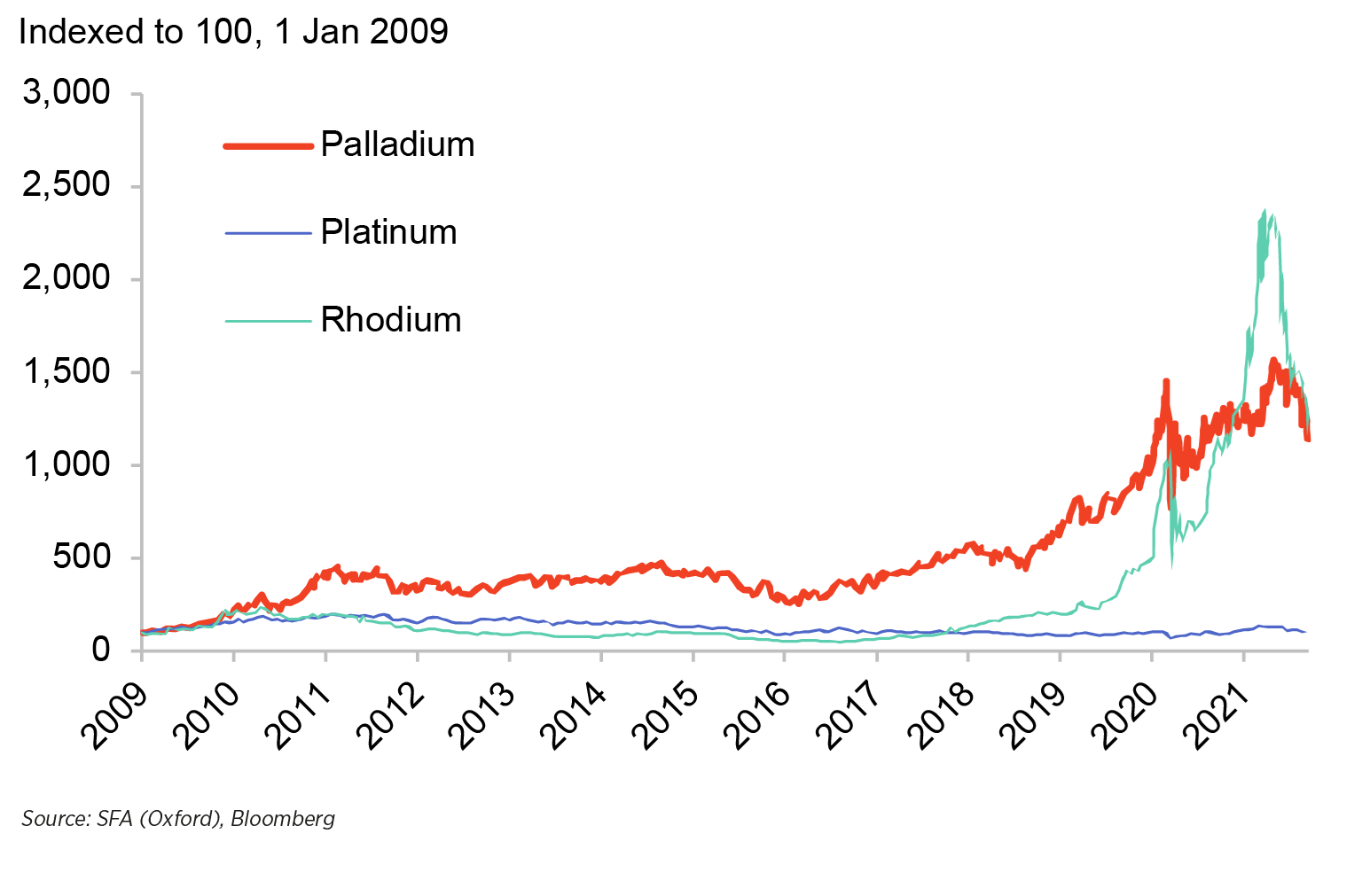
Grades such as this mean that the Stillwater mines have palladium as their primary product. In Southern Africa and Russia, palladium is a by-product from, respectively, platinum and nickel mining. Mining palladium from Stillwater is thus always going to be blown by the prevailing and forecast palladium price winds, rather than the platinum or nickel prices. And as it is not far from the renowned Yellowstone National Park, the ‘adventure’ naturally requires adherence to peak environmental, social and governance (ESG) standards.
Attempts by the auto industry to climb back to pre-Covid production peaks have been severely hampered by the semiconductor chip shortage. Pete Kelly from LMC Automotive shows how the crisis began, and the path automakers must take to get back on track.
The recovery in automotive demand as the pandemic eased late in 2020 caught many in the supply chain by surprise. But consumer and business electronics manufacturers had quickly requisitioned much of the chip manufacturing capacity, leaving auto companies dangling.
Korea, Taiwan and Japan, with strong domestic semiconductor industries, have weathered the shortages much better than much of Europe and North America. Over-reliance on huge quantities of these cheap components, plus under-appreciation of the lead time needed to build new chip production capacity, is forcing a recalibration of sourcing, purchasing and supply relationships by the automotive sector. More respect for the terrain, in fact.
Risks on the palladium commodity mountain are mapped out very clearly for us by Nicky Shiels from MKS PAMP Group. Palladium has drawn in many investors over the past two decades, from institutional investors to fast-money day traders. Heady price volatility might take the breath away, but for some it’s irresistible, so long as there is sufficient liquidity. Or, as in the case of retail investors (tourist climbers?) since the mid-2000s, so long as interest rates are low enough and the ‘story’ – technicals and macro sentiment, not the fundamentals – is tempting enough.
That climbing Mount Palladium is not a more popular sport is easily explained. The confluence of unpredictable liquidity, wild price swings, lack of sell-side market coverage (‘story’ tellers) and limited access to derivatives has deterred generalist participation. Which leaves ‘palladium-eering’ mainly to the pros. A shift “back to basics” (OTC-dominated) with smaller forays. Which usually means a descent in price. But Nicky warns that prices could hold on while rising inflation gives real assets a leg up, and hybridisation expands rapidly before the full ascent of electric vehicles.
The way up (and down)
“Mountaineering would lose its zest if there were no dangers for the daring and skilful.”
George Mallory, 1923
The palladium market is simultaneously contending with a supply interruption from Russia and demand disruption from the automotive industry. As detailed by Pete, the chip shortage has grown progressively worse, while Russian supply has begun to recover, South African output is back to pre-pandemic levels and, as Ryan and Kevin note, Stillwater is ramping up the Blitz project.
With some 7 million fewer light vehicles being produced this year than initially forecast, palladium and rhodium demand has been reduced substantially, and palladium and rhodium prices have retreated from their record highs. SFA thinks they are on a slippery slope to lower prices as the chip shortage looks set to continue well into 2022.
Platinum has escaped the worst of the semiconductor storm but it’s poised precariously, with a large surplus and little investor interest this year. The platinum price has also pulled back from its high earlier in the year. However, it may be nearer the valley floor than either the palladium or the rhodium price, as platinum could be the metal that receives some support from inflation-hedging real asset purchases.

Disclaimer, copyright & intellectual property
SFA (Oxford) Limited has made all reasonable efforts to ensure that the sources of the information provided in this document are reliable and the data reproduced are accurate at the time of writing. The analysis and opinions set out in the document constitute a judgement as of the date of the document and are subject to change without notice. Therefore, SFA cannot warrant the accuracy and completeness of the data and analysis contained in this document. SFA cannot be held responsible for any inadvertent and occasional error or lack of accuracy or correctness. SFA accepts no liability for any direct, special, indirect or consequential losses or damages, or any other losses or damages of whatsoever kind, resulting from whatever cause through the use of or reliance on any information contained in the report. The material contained herewith has no regard to the specific investment objectives, financial situation or particular need of any specific recipient or organisation. It is not to be construed as a solicitation or an offer to buy or sell any commodities, securities or related financial instruments. The recipient acknowledges that SFA is not authorised by the Financial Conduct Authority to give investment advice. The report is not to be construed as advice to the recipient or any other person as to the merits of entering into any particular investment. In taking any decision as to whether or not to make investments, the recipient and/or any other person must have regard to all sources of information available to him. This report is being supplied to the recipient only, on the basis that the recipient is reasonably believed to be such a person as is described in Article 19 (Investment professionals) or Article 49 (High net worth companies, unincorporated associations etc.) of the Financial Services and Markets Act 2000 (Financial Promotion) Order 2005.
© Copyright reserved. All copyright and other intellectual property rights in any and all reports produced from time to time remain the property of SFA and no person other than SFA shall be entitled to register any intellectual property rights in any report or claim any such right in the reports or the information or data on the basis of which such reports are produced. No part of any report may be reproduced or distributed in any manner without written permission of SFA. SFA specifically prohibits the redistribution of this document, via the internet or otherwise, to non-professional or private investors and accepts no liability whatsoever for the actions of third parties in reliance on this report.
PGM market reports
Stay ahead of market developments with our latest PGM intelligence reports.




How can we help you?
SFA (Oxford) provides bespoke, independent intelligence on the strategic metal markets, specifically tailored to your needs. To find out more about what we can offer you, please contact us.
